As a man who likes wilderness, faraway and remote places I'm compelled to have a vehicle that can carry me there safely and with a minimum of fuss. The vehicle must be able to handle rough terrain including sand, mud, rocks, rutted and corrugated tracks, inclines, declines, side-slope, creek and river crossings and just about everything you can imagine - Not minefields though thankfully.
This is why I've always had four wheel drives. It's the only vehicle capable of taking me where I need to be; That is, away from society and its noise. [Read: People.] I have the skills to use one learned through experience and training and put them to good use.
I've had all types of four wheel drives from wagons to utes, pickups, trucks, bakkies, whatever you wish to call them. They've all been purpose-bought for the job at hand and have been highly modified.
The image below shows my current four wheel drive, the current model 200 Series Toyota Landcruiser. This 4.5L V8 twin-turbo diesel wagon is legit and up to the task with massive amounts of horsepower and torque, a 3.5 tonne towing capacity, good ground clearance, approach, ramp-over and departure angles and is comfortable and has all the things that go beep too! It's a sheer pleasure to own and drive. It's really fast too. 😁
Having said that though, I've had to modify it for my needs, to make it more usable, efficient and safe. It's typical though as manufacturers provide a fairly basic vehicle that is comfortable, rides well, meets design rules and a price point...The rest is up to the owner and over the last year or so I've been accessorising my 200 Series for my needs.
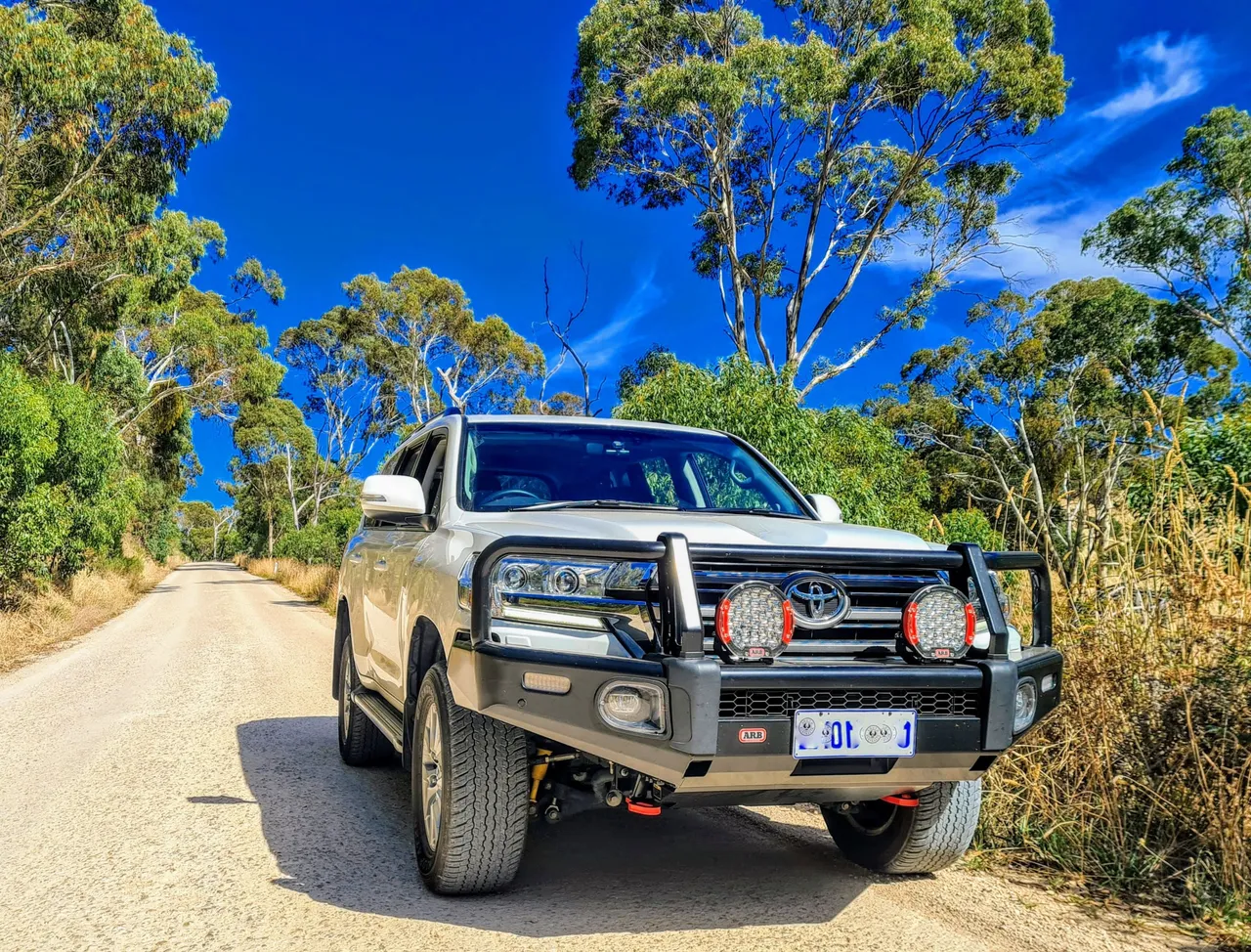
So far I've added an auxiliary battery system with REDARC BCDC controller to accept solar and alternator input for charging. I added a 60L fridge/freezer which runs off the auxiliary battery; It sits on a slide-out roller draw in the rear load compartment.
There's 40amp Anderson plugs to charge my camper trailer (has a battery system on the trailer) when towing and an electronic brake controller by REDARC which operates the brakes on my camper trailer.
I also did a two inch suspension lift which has increased the gross vehicle mass capacity (GVM) of the vehicle which means I can load it with more weight. This needed an engineering report and to go over the pits at the government motor vehicle inspection centre for compliance. I used Old Man Emu off-road suspension for the job.
I added the ARB Summit bull-bar which, in my opinion is critical for outback travel in Australia and also a couple of front recovery points for those times I get bogged.
There's a lot to go yet, but it's a good start and allows me a good deal of confidence when I'm in those remote places I love so much.
On the bull-bar you'll see the spot lights I've had fitted. These are what I want to talk about today.
They're also from ARB and are called Intensity Solis a very legit LED lighting system.
On my last truck I had the same but not Solis which are only new. They are the same light intensity and profile as the standard Intensity light and the distance-penetration is the same too. But with the Solis they solved one of the big problems the predecessor had...They were sometimes too bright and could not be changed.
The issue arose when they were used in the bush and scrub or roads where tree trunks, cliff-faces and other objects reflected light back into the drivers eyes; It causes eye fatigue and strain. They are great for long distance on open roads but again the reflection off the reflective road signs and on-road reflectors brought the same issues. So ARB solved that issue...By making them dimmable. Enter the Intensity Solis.
The cool thing is that these spot lights can operate at different brightness levels being output from 5% to 100% which is really cool. They are operated by a small panel mounted to my dashboard which is backlit so always easy to find. A few presses one way or the other and I can dial in the desired light intensity for the situation. They're very cool!

The other night when I was out culling I took some snaps to show you what they look like in operation - See below with some explanations as well. Oh, just so you know, the law says spot lights can only operate when the vehicles' high beam lights are on and have to be able to be turned on and off independently. Obviously mine comply. im src 👆
Vehicle normal beam light profile
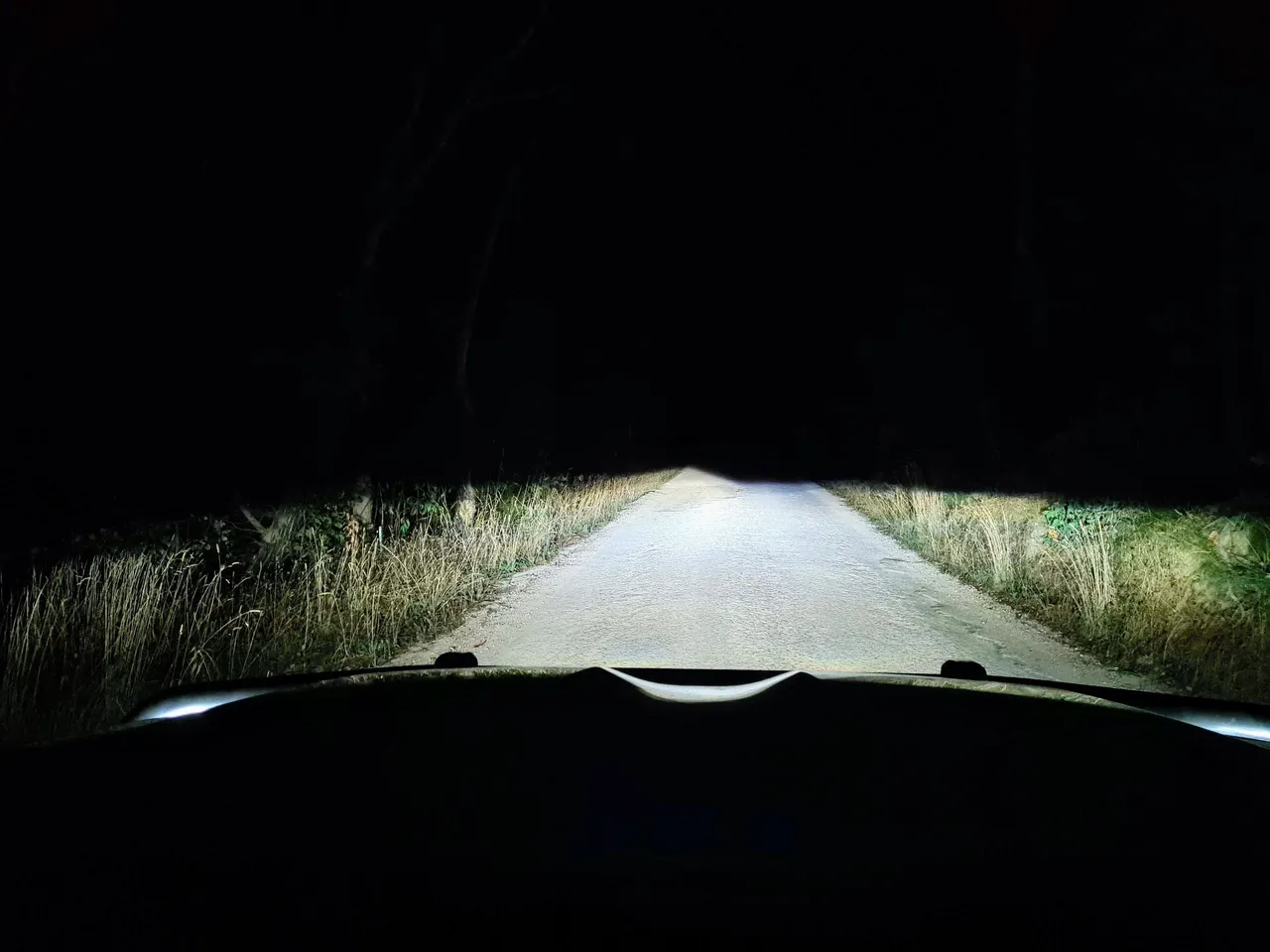
Above is the normal headlight beam. You'll note that they have a very flat light-profile which is government-regulated so headlights do not blind oncoming drivers. You'll also note that the beams are distinctly lower on the right which is because the oncoming traffic is on that side. This is an ADR (Australian Design Rule.) The factory headlights are very good on the 200 Series...But it get's better.
Vehicle high-beam light profile
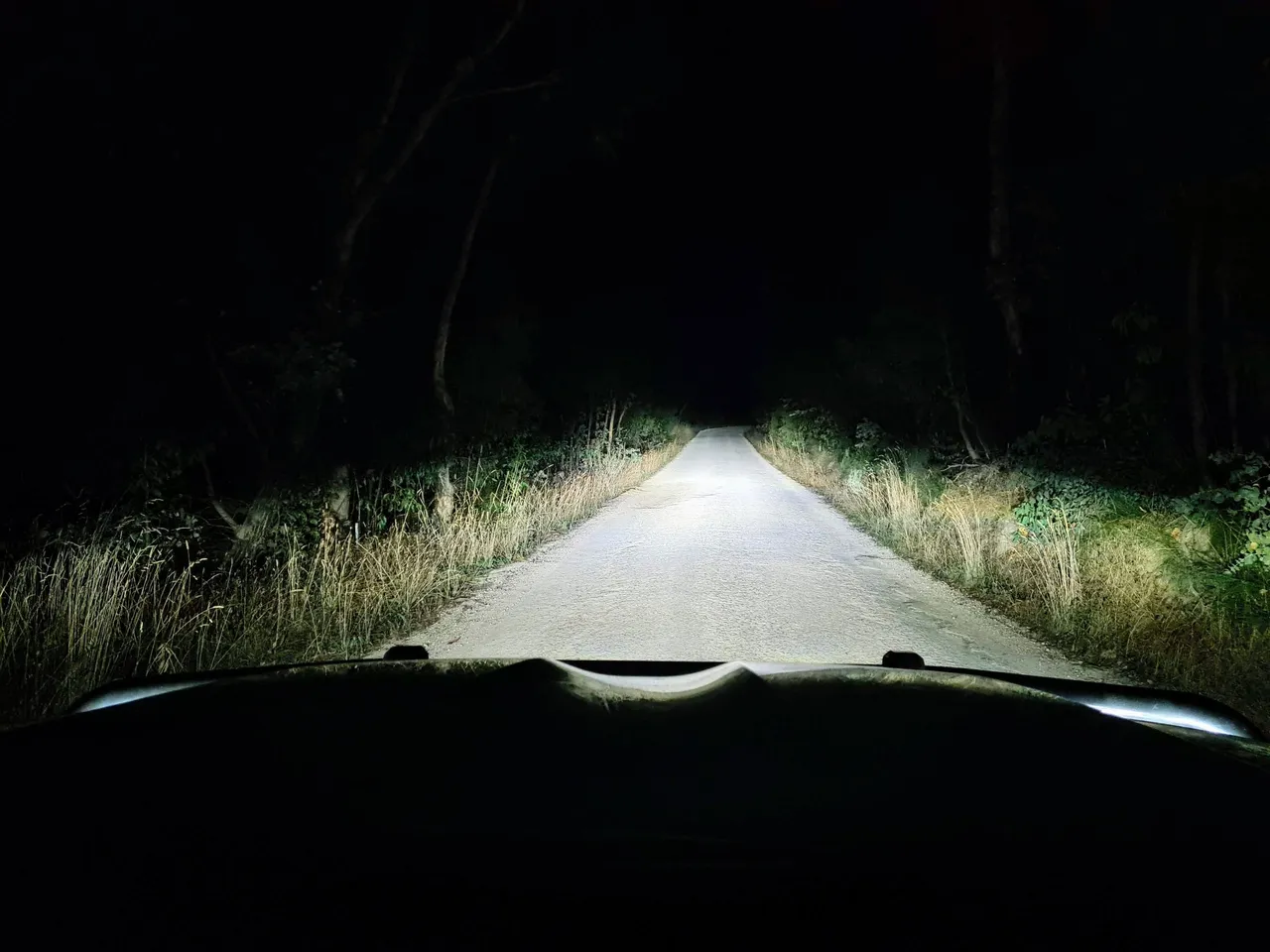
Without moving the vehicle I hit the factory high-beams. You can see the light-profile open up, get higher and wider essentially, and in normal driving conditions these lights are about all one needs. They are bright, evenly patterned with no hot-spots and allow enough light to the sides, essential to mitigate the risk of animal-strike which is an issue here in Australia. Hitting a kangaroo or wombat at 110kph will mess up a vehicle in short order and it's best avoided. Light is required to do so.
Vehicle high-beam plus Intensity Solis at 60%
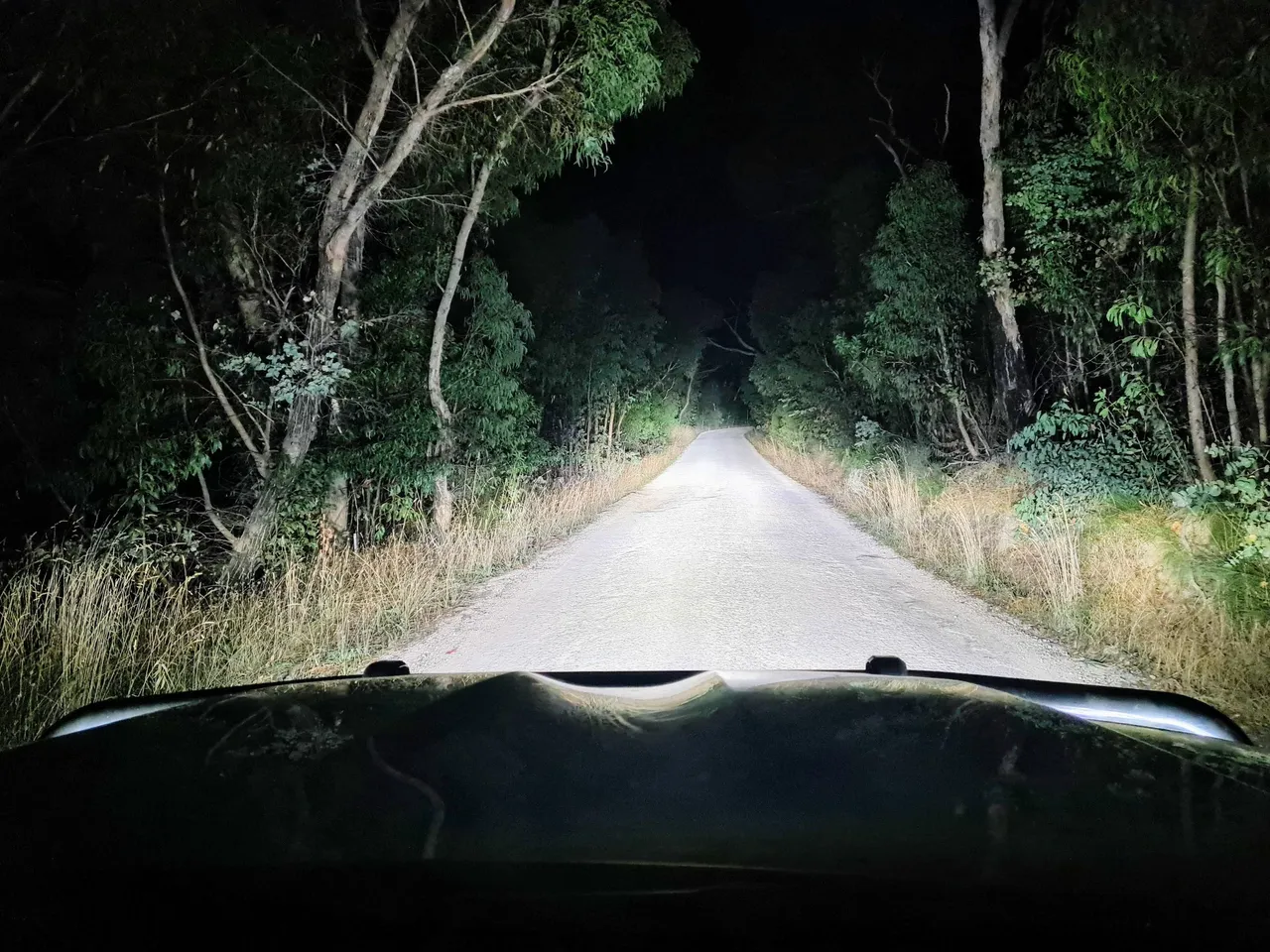
Here's the vehicle's high-beam lights plus the spot lights at 60% - The difference is amazing. I have two spot beams rather than spread beams and whilst I did that for distance-penetration, they reach to 1000 metres, they also provide excellent side to side light-profile as you can see. With no trees either side the light easily penetrates 10-15 metres left to right; It allows one to see what's coming. Kangaroos are unpredictable and will often bound right across the vehicle. It doesn't make sense, but that's what they do.
Vehicle high-beam plus Intensity Solis at 100%
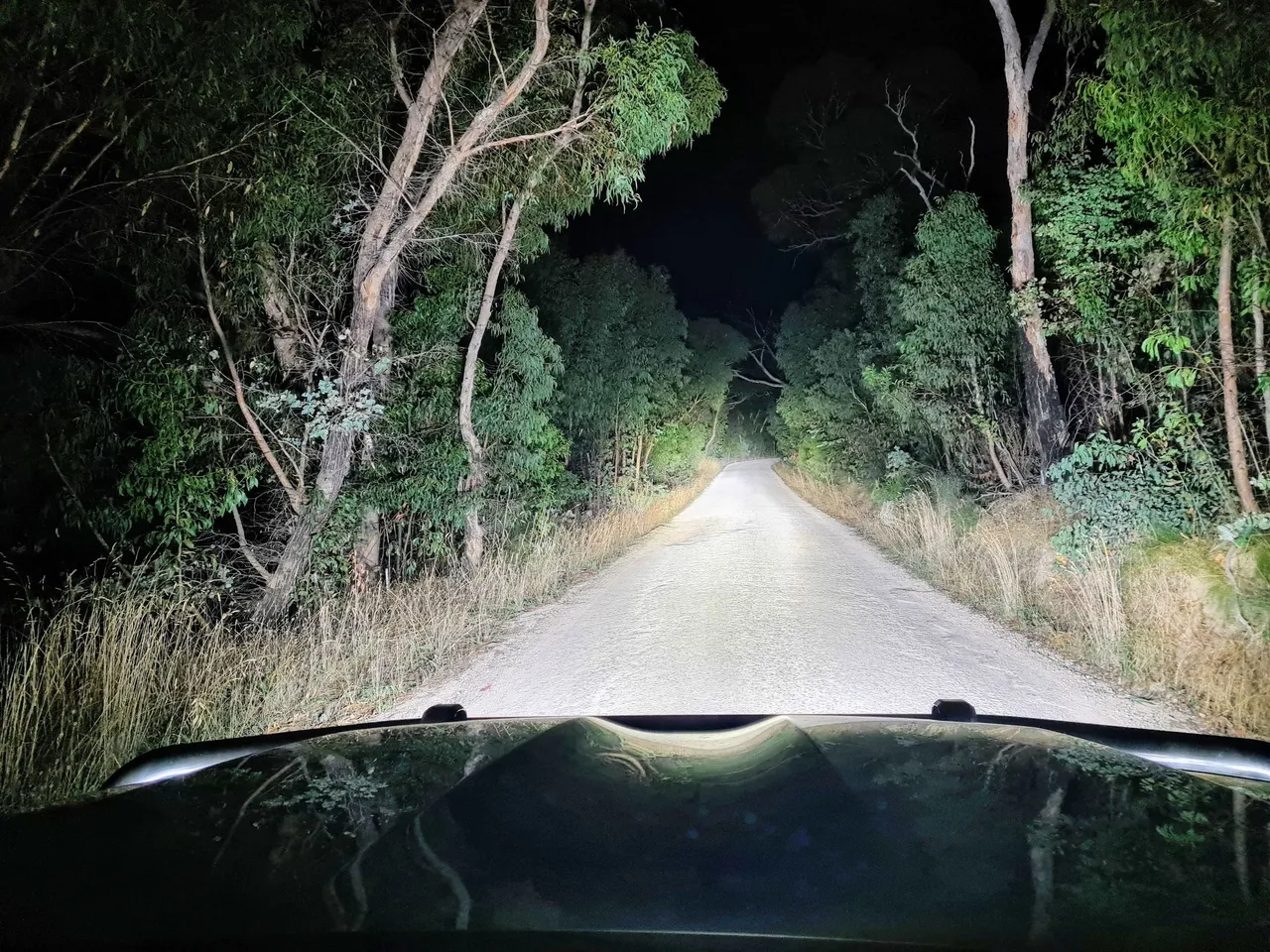
This is at 100% intensity which is the same amount of light as the original Intensity spot lights. There's a definite use for them, but as I said, they are often far too bright for typical use. In areas like this the light bounce-back reflecting off things is very annoying and over long periods behind the wheel can be very fatiguing. Even in this photo you can see how bright the road is and the light reflecting back. In this situation I'd dial them back to about 40% which would provide ample light and far less reflection.
Australia is a big country, one I love passionately. I have travelled far and wide across most of it and a lot of that has been in a four wheel drive. There's nothing quite like the experience of a road trip and turning down a track along which you know you'll not see another soul. But one needs to be prepared for remote travel hence my need to enhance my vehicles.
To see Australia properly, and to escape people, one needs to travel over vast distances and whilst outback or remote driving isn't really suggested at night there's times when it's unavoidable - That's when light-systems like this earn their keep. The bull-bar too for that matter, designed to protect the soft parts of the car and keep it running when an animal is struck...But that's another post.
Having the Intensity Solis lights bolted onto my bull-bar means I'm good to go. They're robust, rugged, bright and flexible...Kind of like the driver! Hmm...He's mostly flexible, and sometimes bright. 😉
Design and create your ideal life, don't live it by default - Tomorrow isn't promised so be humble and kind
Discord: galenkp#9209